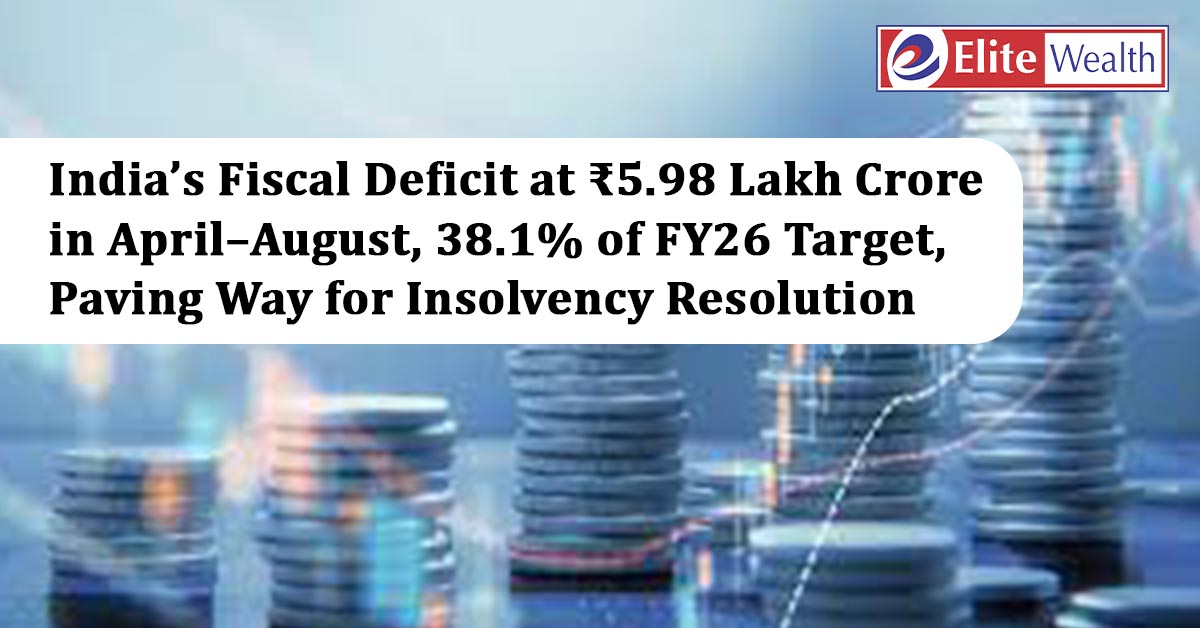
India’s fiscal deficit reached ₹5.98 lakh crore during the first five months of FY26 (April–August), accounting for 38.1% of the full-year target of ₹15.68 lakh crore, as per official data released on Tuesday. The fiscal deficit, which tracks the gap between the government’s total expenditure and receipts (excluding borrowings), remains a key indicator of borrowing requirements and overall fiscal health.
Revenue Deficit Highlights
The revenue deficit for April–August stood at ₹1.9 lakh crore, reflecting the shortfall between revenue receipts and revenue expenditure. Despite growth in both collections and spending, the shortfall underscores the challenge of covering day-to-day expenses through revenues alone.
Expenditure Trends: Focus on Growth
Government spending showed a strong year-on-year rise:
- Capital expenditure climbed to ₹4.31 lakh crore, up from ₹3.01 lakh crore a year earlier, highlighting the administration’s push for infrastructure development and growth-driven investments.
- Revenue expenditure also increased, covering welfare schemes and administrative functions.
The higher share of capital expenditure underscores a focus on asset creation, which can attract private investment and strengthen long-term economic growth.
Revenue Receipts: Strong Non-Tax Support
On the receipts side, non-tax revenue rose sharply to ₹4.40 lakh crore, compared with ₹3.34 lakh crore in the same period last year. The increase was aided by higher dividends, profits, and fees from public sector undertakings, offering the government additional fiscal space.
Meanwhile, tax devolution to states rose to ₹5.30 lakh crore from ₹4.55 lakh crore, reinforcing the fiscal strength of states to pursue development and social welfare programs—signaling the centre’s emphasis on cooperative federalism.
Path of Fiscal Consolidation
The Union Budget for FY26 has pegged the fiscal deficit at 4.5% of GDP, down from 4.9% in FY25, marking a step toward gradual fiscal consolidation. The government faces the challenge of balancing infrastructure-led growth with fiscal prudence against the backdrop of global economic uncertainties and domestic spending priorities.
Summary
India’s fiscal deficit touched ₹5.98 lakh crore in April–August FY26, representing 38.1% of the annual target. Strong growth in non-tax revenue and capital expenditure supported the fiscal position, while higher state transfers reflected cooperative federalism. With the FY26 target set at 4.5% of GDP, the government is pursuing fiscal discipline alongside growth imperatives, aiming to sustain momentum despite global and domestic headwinds.
Disclaimer:
This article is intended solely for educational and informational purposes. The securities or companies mentioned are provided as examples and should not be considered as recommendations. Nothing contained herein constitutes personal financial advice or investment recommendations. Readers are advised to conduct their own research and consult a qualified financial advisor before making any investment decisions.
Investments in securities markets are subject to market risks. Please read all related documents carefully before investing.
